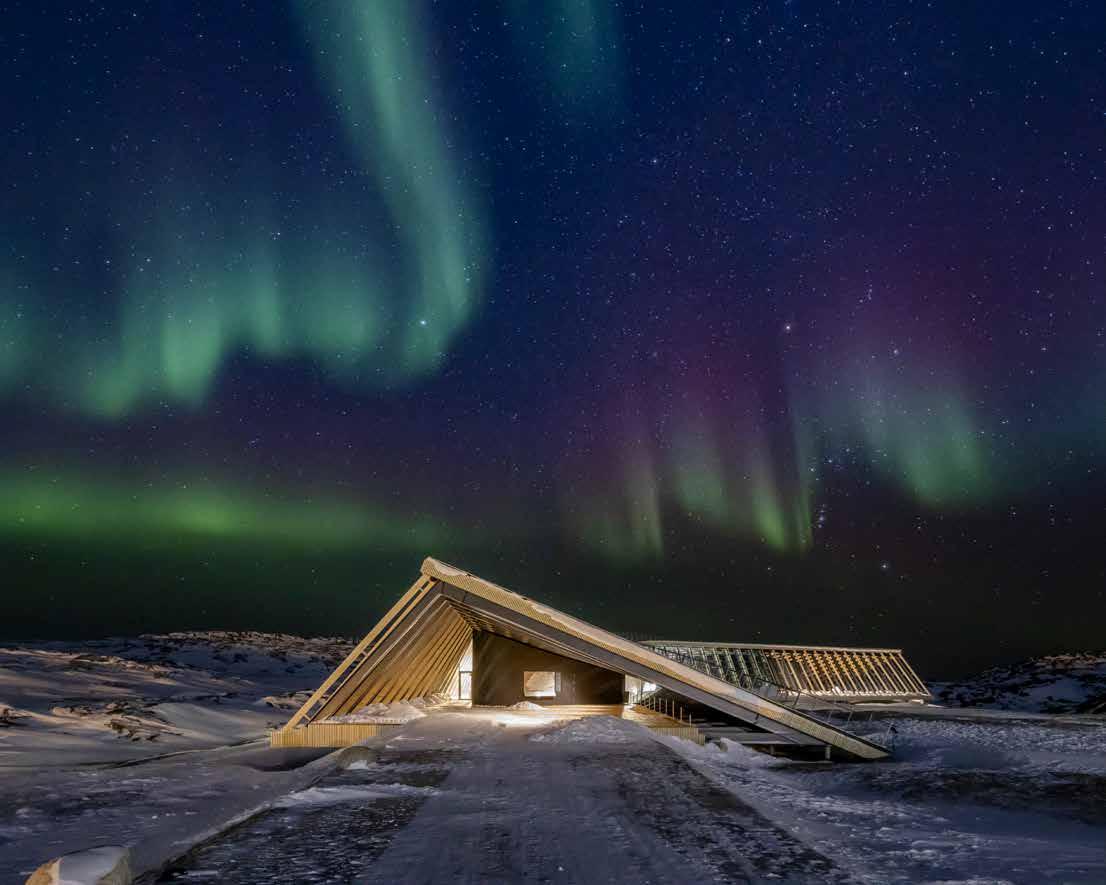
1 minute read
The kaffemik hostess
UNESCO WORLD HERITAGE
UNESCO adopted the World Heritage Convention in 1972. The goal of the convention is to identify and preserve the world’s cultural and natural heritage through inclusion on UNESCO’s World Heritage List. The purpose of the list is to promote global awareness of our shared heritage and thus promote its preservation and care.
Denmark and Greenland ratified the World Heritage Convention in 1979. In 2004, Kangia – Ilulissat Icefjord became the first Greenlandic site to be included on the list.
Thanks to a stable climate and many cloud-free days, it is often possible to see the northern lights from Ilulissat. The spectacular natural phenomenon is best experienced from September into early April.
vision for an Icefjord visitor centre and discuss how it could be realized. ‘As local politicians, we had long wanted an Icefjord Centre, and various possibilities had also been debated. But a strong sense of mutual trust developed between the three of us, because we spent so much time talking to each other. Based on these talks, I knew that this was going to become a reality. I think the others felt the same way,’ says Mayor Palle Jerimiassen. The three parties spent months discussing challenges, dilemmas and priorities, while preliminary studies and analyses were carried out to determine the economic basis of the Icefjord Centre and its specific siting, size and content. The common vision that emerged from these talks was to create the Ilulissat Icefjord Centre –an extraordinary building in an extraordinary setting. And on 26 June 2015, the three parties signed the agreement to build a new Icefjord Centre dedicated to presenting the unique cultural and natural history of this World Heritage Site. The Icefjord Centre was to match the magnificent setting without overpowering it. ‘The vision for the Icefjord Centre set a high bar for the architects who would realize it,’ says Pele Broberg, Minister of Business and Trade in the Government of Greenland.











